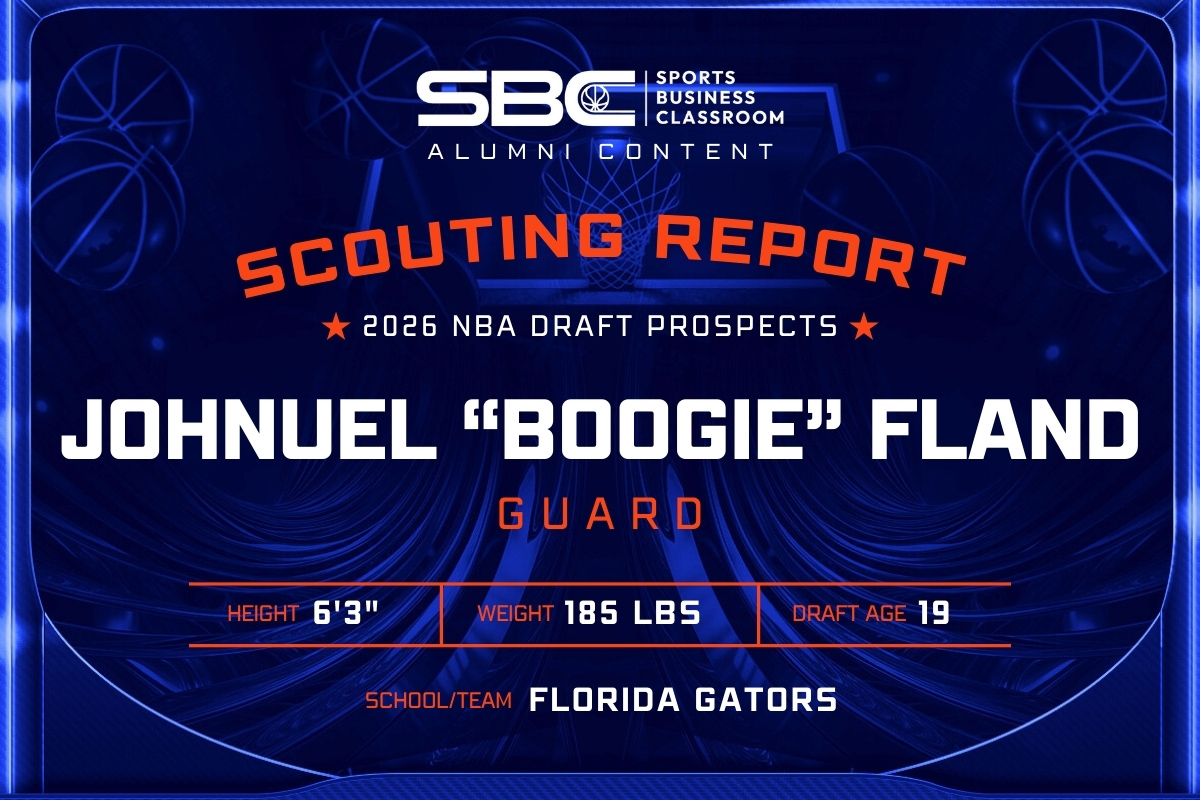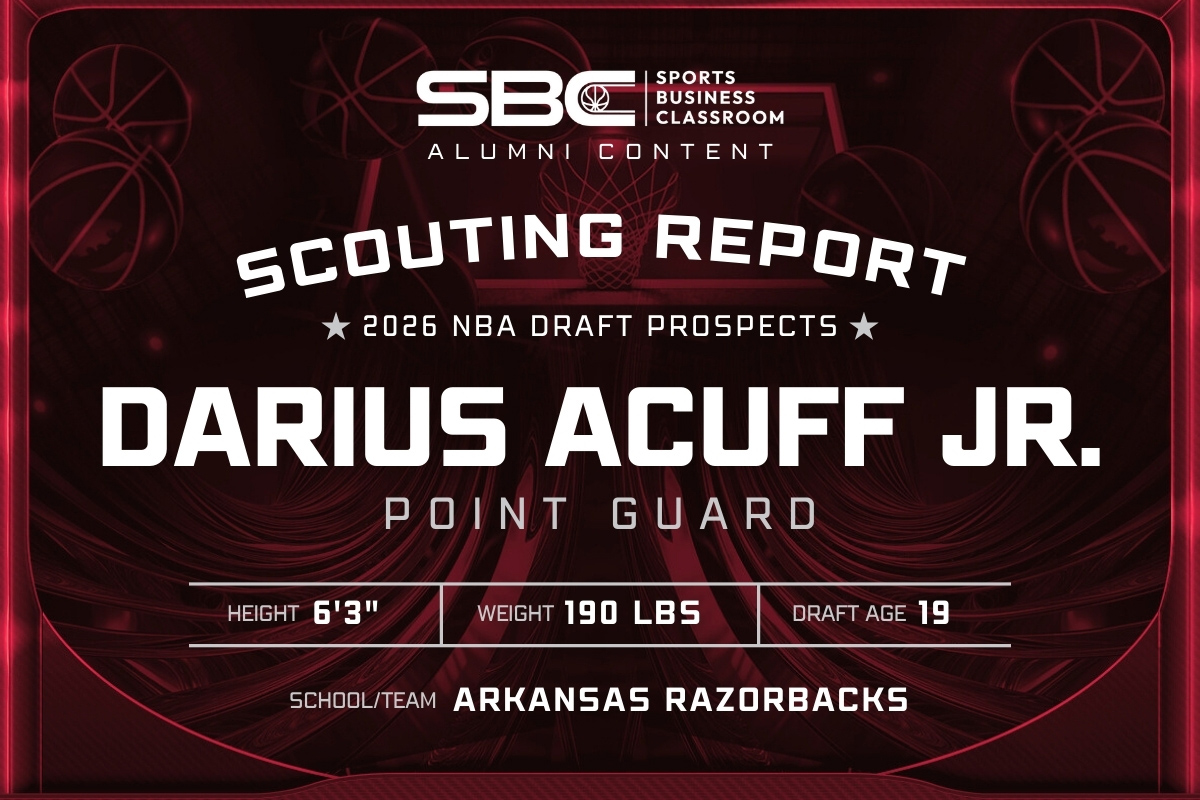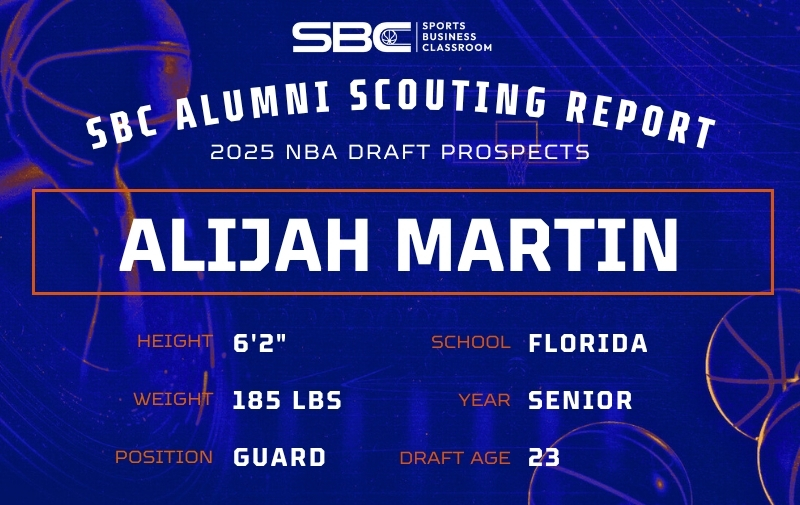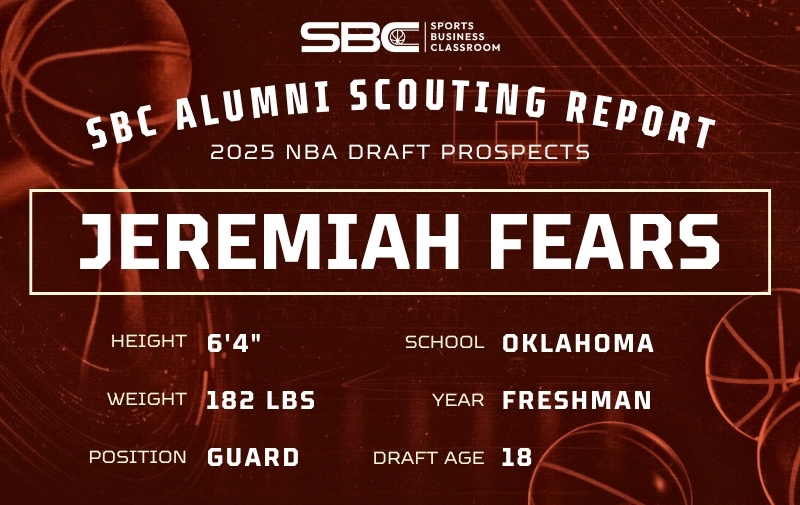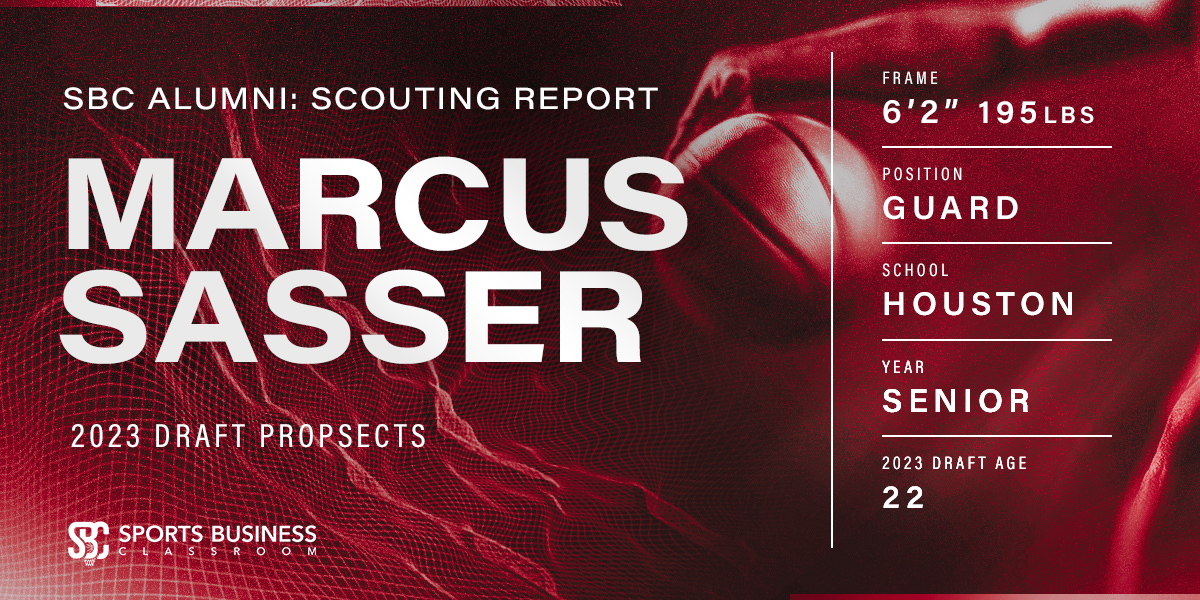
[The following scouting report is part of a series on potential 2023 draft prospects from Sports Business Classroom alumni.]
Marcus Sasser
Frame: 6′ 2″, 195 lbs
Position: Guard
Team: Houston
2023 draft age: 22
Stats via: Barttorvik,teamrankings.com, ESPN, YouTube
Offense
After sustaining a season-ending foot injury in December 2021, Sasser elected to forego the NBA draft and return for his senior season. While Houston’s postseason aspirations fell short after losing to Miami (FL) in the Sweet Sixteen, Sasser led his team in points per game en route to a 33-win season.
Primarily playing the two-guard this season, Sasser’s shooting and playmaking aided his offensive rating of 123.5, ranked ninth of all Division I guards. Sasser’s 3.1 assists per game and 1.9 assist-to-turnover ratio were second on his team to starting point guard Jamal Shead. However, of the 125 Division I players who made at least 75 threes and played at least 50 percent of their teams’ minutes, Sassers assist: turnover ratio ranked 20th, showcasing his skillset of being a perimeter threat and ability to find open teammates.
Sasser was one of just 27 Division I players to make at least 90 threes and shoot above 38 percent from long range. Of these players, Sasser ranked ninth in turnover percentage and fifth in assist percentage. Only one player (Darius Mcghee of Liberty) had a better assist percentage while committing fewer turnovers.
Sasser can score and play make off the dribble; he can score from all three levels and possesses a floater to shoot over paint defenders. His two-point percentage of 51.4 ranked 10th of 38 Division I players to make at least 90 threes. Despite a shorter height, Sasser knows how to get to his spots, maintain efficiency, and draw contact—his free throw rate of 34.7 ranked fifth of all players to make at least 90 threes.
A high basketball IQ enables Sasser to spot up on catch-and-shoot opportunities, get open without the ball, and make a play off the dribble. Capable of taking on primary ball-handler responsibilities and able to score from anywhere on the court, Sasser’s offense fits the mold of a versatile guard off the bench in the NBA.
While he’s an efficient scorer, Sasser tends to bring the ball down on his three-point shot, and with a smaller frame for a two-guard, many NBA defenders will be able to contest and quicken up Sasser’s release. Still, Sasser can score effectively, attack the basket, and create plays for his teammates.
- 0:42 mark, Sasser pump fakes one man, then uses a floater to finish above 6’9″ forward Malcolm Dandridge.
- 8:32, Sasser splits defenders and finishes at the rim through contact
- 9:27, Sasser creates space off the dribble to shoot above forward Johni Broome, who averaged 2.4 blocks per game.
Defense
Sasser is an aggressive, physical defender capable of defending on the perimeter at an elite level. He moves well laterally and fights through screens, making up for his smaller 6’2″ frame. Second on the team in steals and first in steal percentage, Sasser is a nuisance along the perimeter, disrupting dribble hand-offs and jumping passing lanes.
Playing a physical brand of defense can often lead to players over-committing and fouling. However, Sasser’s 2.0 fouls per 40 minutes were the fewest on the team and 13th fewest of 167 Division I players who played at least 50 percent of their team’s minutes and had a steal percentage above three percent.
While Sasser is known more for scoring, of the 187 Division I players who made over 50 threes and shot above 38 percent, Sasser’s steal percentage ranked eighth. Of the seven players ranked ahead of Sasser, just one, CJ Fulton (Lafayette), committed fewer fouls per 40 minutes.
Sasser can defend well along the perimeter and use his physicality to prevent guards from backing him down in the post. In addition, his 6′ 7″ wingspan makes up for his lack of height at the two-guard position and allows him to agitate guards off the dribble.
From the video above:
- 15:08, Sasser fights through a screen, prevents a right-handed drive, and blocks the jump of SMU leading scorer Zurich Phelps.
- 16:15, Sasser denies the ball off a screen, then uses good defensive awareness to jump the pass to a wing shooter.
- 16:50, 17:13- 17:29, Sasser shows his defensive awareness skills, playing the “free safety,” jumping passing lanes leading to fast-break opportunities.
While Houston was one of the best defensive teams in the country (second-best defensive efficiency behind Tennessee), Sasser was as much a factor as anyone for the Cougars. His aggressive defensive ball pressure and denial disrupted set plays and forced opponents to play out of their comfort zone. Sasser brings a tenacious presence in the backcourt, contributing to his 88.4 defensive rating, ranked 18th of 857 Division I players who played at least 70 percent of their teams’ minutes.
Looking Ahead
An attractive prospect likely in the 25-40 draft range, Sasser is one of the better defensive guards in the draft, an NBA-ready prospect who can make an impact off the bench as a secondary playmaker and scorer. He is a proficient catch-and-shoot scorer, which will spread the floor and open driving lanes for teammates.
Playing more as the two-guard in college, Sasser’s role may be limited until he can prove his size won’t hinder his production and he can keep up with NBA length. Teams may take advantage of the more undersized backcourt, but Sasser’s quickness, shooting, and physicality defensively should limit this hindrance.
Sasser is a good shot-creator and can create separation off the dribble, but he tends to bring the ball below his waist on three-point shots, allowing defenders time to contest, alter, and block his shots. Sasser may need to correct his shot mechanics at the next level to get his shot off consistently against larger, faster, and better players.
Still, Sasser has the skillset to become one of the premier guards from this draft class. His defensive pressure and long wingspan will earn him minutes to play alongside defensively challenged teammates. As the season progresses, Sasser will establish a more concrete role within his organization. More of a “tweener” right now, Sasser should become a productive secondary ball handler, improve his release, and continue his efficient outside shooting. His stifling defense will continue to trouble the opposition, leading to turnovers, fast break opportunities, and transition threes.



